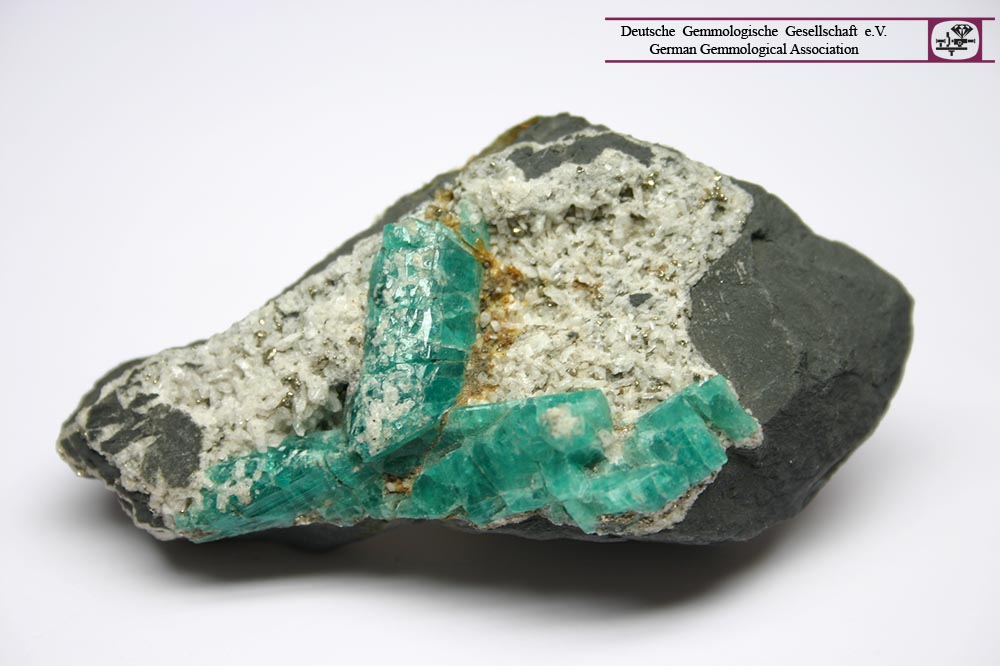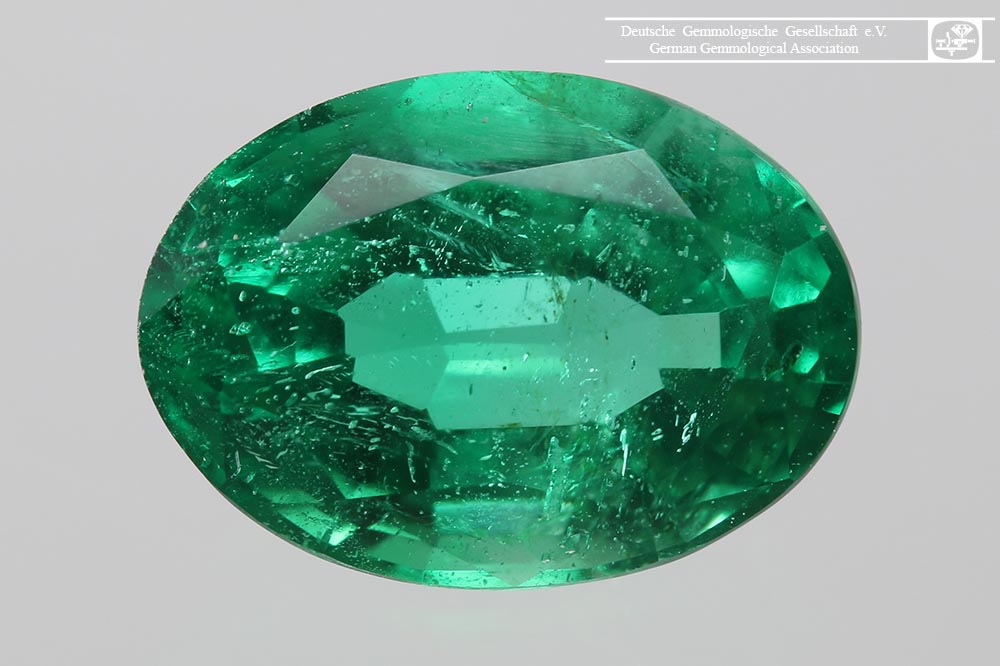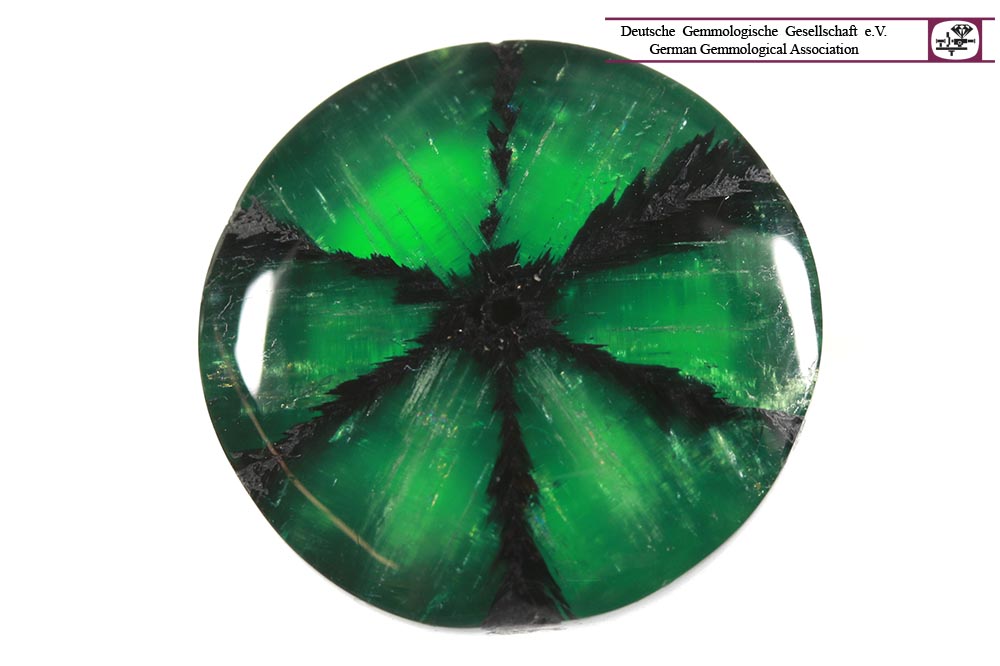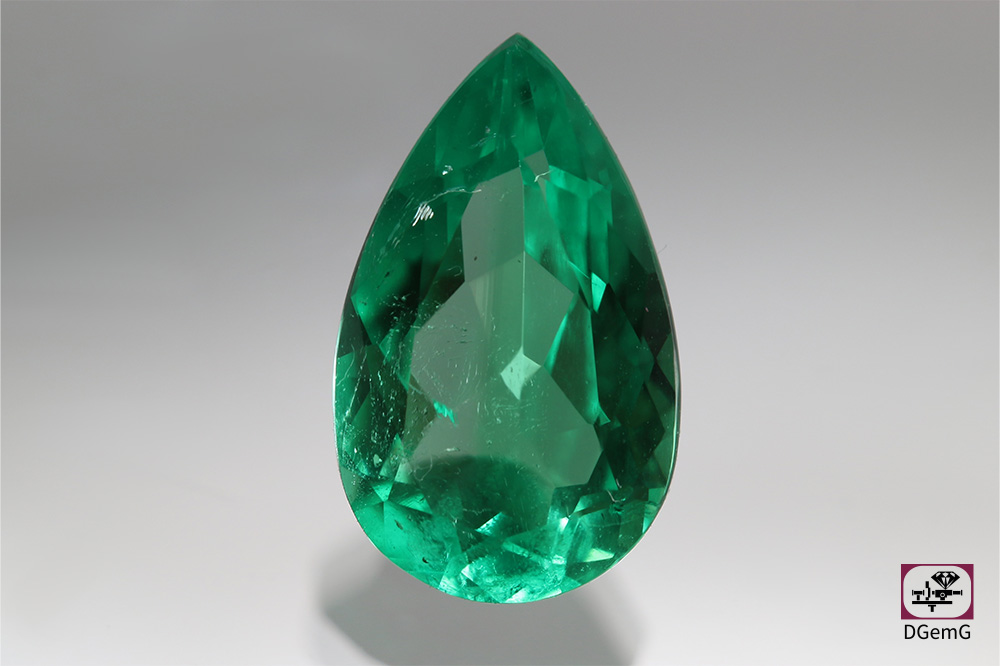The use of emeralds for jewellery dates to Egyptian times, when greenish crystals found in the Gebel Sikait area were known as early as 3500 BC. The pits in the area later became known as the “emerald pits of Cleopatra”. The name “emerald” is derived from the ancient Greek word smaragdos, meaning green stone. Emeralds were known in India in 400 BC and the ancient Romans are said to have had knowledge of the deposits in the Austrian Habach Valley.
In 50 AD, Pliny the Elder mentions the so-called “Scythian emerald”, which probably originated from emerald deposits on the Tokovaya River near Ekaterinburg in the Russian Urals. However, the Panjir Valley in present-day Afghanistan is also considered a probable source of historical emeralds in the 3rd century BC. An early description “...nothing is greener than an emerald” goes back to Pliny the Elder.

The most important emerald deposits in the world today are found in Colombia. It is assumed that they were known to the indigenous people living in the region as early as 1000 AD, who worshipped the emeralds as the tears of Princess Fura. However, the economic importance of Colombian emeralds only became apparent in the 16th century when they were discovered by the Spanish. In 1560, a Spanish officer discovered the green crystals by chance when his horse stumbled over a root. The legendary Somondoco mine yielded beautiful emeralds which were delivered to the Spanish court. From there, they were traded on to other European and Asian aristocrats, which is the origin of today's popularity.
The Andean crown made by Spanish goldsmiths in the Andean city of Popayan in 1593, which adorns the head of the city's patron saint and consists of 453 emeralds set in gold, is of great historical significance. At the end of the 18th century, exploitation, degradation, corruption and smuggling led to a decreasing production for the Spanish crown. At some time, mining came to a complete standstill and the jungle overgrew the mines.
Two famous mining areas, Muzo and Chivor, are still legendary today. Chivor was rediscovered in 1911 by the Colombian mining engineer Francisco Restrepo and the gemstone trader Fritz Klein from Idar, while Muzo resumed production in 1947. The emerald mines of Colombia and the people on the hunt for the legendary green stones in the remote, rugged mountain landscape of the Cordilleras, the Esmeralderos, have shaped the history of this green gemstone in a unique way.
Two terms embody the uniqueness of Colombian emeralds. “Gota de Aceite” (oil drop) characterises the best quality of Colombian emeralds with a slightly “oily”, soft, diffuse green colour. It is said that the finest stones come from the “old” Muzo mine - this is what the name “Old Mine” stands for. The unique colour quality of Colombian emeralds comes from their open green colour without greyish hue and almost no blue undertones due to only very low iron contents. Today, the term “Muzo Green” is used as a colour description in the international emerald trade which stands for the finest shades of green, mostly regardless of origin.
In addition to Colombia, Zambia and Brazil are particularly important production countries for emeralds today. Deposits in Afghanistan and Pakistan as well as Madagascar, Tanzania and Ethiopia provide gem-quality material too. As early as 1550, green stones were found in Brazil which were thought to be emeralds because of their colour but were in fact tourmalines. These tourmalines were therefore called “Brazilian emeralds” for centuries. It was not until the 20th century that actual emeralds were found in Brazil. Today, numerous mines in various federal states supply emeralds in different qualities.
 Emerald from Zambia in typical “African emerald colour” and visible inclusion pattern.
Emerald from Zambia in typical “African emerald colour” and visible inclusion pattern.
In Zambia, formerly Northern Rhodesia, emerald finds were known before 1970 but were only sparce and sporadic. In 1972, rich deposits were discovered at the confluence of the Kafubu and Kafue rivers, yielding beautiful stones with a typical blue hue that is known in the trade as the “African emerald colour”. The largest open-cast mine is the Kafubu mine, which is currently the largest emerald mine in the world.
 Left: Three-phase inclusions in a Colombian emerald. Right: Slightly streaky, “oily" growth structures (“Gota de Aceite”).
Left: Three-phase inclusions in a Colombian emerald. Right: Slightly streaky, “oily" growth structures (“Gota de Aceite”).
Chromium is responsible for the green colour of emeralds, partly in combination with vanadium. Emeralds from Zambia have deep green colours with a typical blue tone, as already mentioned, which stems from the presence of additional iron. Some Brazilian stones can have similar colour tones too. Inclusions are very common in emeralds and the term “jardin” was created in the trade for the inclusion images, which are reminiscent of gardens. Characteristics are the three-phase inclusions, which are specific to the origin of Colombian emeralds. The so-called trapiche emeralds are a speciality among Colombian emeralds. They are special crystal formations with a star-shaped, six-centred arrangement of inclusions.
Already 2000 years ago, people knew how to improve the visual quality of cracked stones by oiling them. In Colombia, cedarwood oil was traditionally used to make cracks less noticeable and prevent dirt particles from penetrating the open cracks. Today, synthetic resins, sometimes mixed with conventional colourless oils, are used to ensure a permanent and more stable treatment.
Green is the colour of hope and emeralds stand for happiness, honesty and hope. Already the Romans attributed special powers to emeralds. They believed the stone would change colour if one did not tell the truth. Emerald is the birth stone for the month of May.
One particularly famous emerald is the 217.8 carat Mogul Emerald which is richly engraved with floral patterns and prayer texts which puts its owner under the protection of God. There are many famous rough crystals from Colombia, Zambia or Madagascar, weighing up to several kilograms. These emeralds are exhibited in museums or are privately owned. The largest crystal was found in 2009 in a riverbed in Madagascar and weighs 6.8 kg. The largest emerald specimen comes from Brazil. It consists of numerous crystals, weighs 341 kg and was discovered in 2001. The latest discovery of an extraordinary emerald crystal weighing 1.5 kg was made in July 2021 in the Kagem mine in Zambia. It was named Chipembele, which is the local name for a rhinoceros.
Jewellery with emeralds can be found in many royal treasuries, including the Crown Jewels of England and Iran. Ancient, engraved emeralds can be found in the treasures of Indian moguls. The Star of Atocha, a cut Colombian emerald weighing 12.72 ct, became famous a few decades ago. The rough stone, weighing 25.87 ct, was part of the cargo of the Spanish galleon Nuestra Senora de Atocha which sank in a hurricane off Florida on its way to Spain in 1622. The wreck was found in 1985 and the cargo salvaged, it included many rough emeralds from the mines of Colombia.
 Trapiche emerald from Colombia.
Trapiche emerald from Colombia.
Probably the most famous piece of emerald jewellery is Elizabeth Taylor's Bulgari brooch which she received as a wedding gift from Richard Burton and wore it at her wedding in 1964. The brooch is set with an approximately 18-carat Colombian emerald surrounded by 12 pear-shape cut diamonds. When the brooch was auctioned with other pieces of her collection at Christie's in 2011, it achieved a price of US$ 6,578,500 and still holds the record for the most expensive piece of emerald jewellery. One of the finest emeralds that was auctioned in recent years is the “Rockefeller Emerald”, a Colombian eye-clean, completely untreated emerald weighing 18.04 ct. It was purchased by the Rockefellers in 1930 in a brooch and later set in a ring. In 2017, it was auctioned at Christie's and realised a sales price of US$ 5.5 million, which corresponds to US$ 300,000 per carat.
Authors
Dr. Ulrich Henn & Dr. Tom Stephan, DGemG
© 2022



